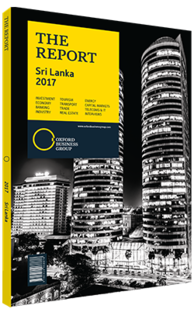Peter Wong, Deputy Chairman and Chief Executive, HSBC: Viewpoint

Viewpoint: Peter Wong
To really understand what China’s Belt and Road initiative is all about, it’s best to stop thinking of it as being purely about “roads” and infrastructure “belts.”
True, “Belt and Road” will involve building a lot of highways, railways, bridges and other infrastructure, which will act as the physical building blocks that will facilitate greater trade flows not just with China’s immediate neighbours, but also with Europe, Africa and the Middle East. First laid out by China’s President Xi Jinping more than three years ago, it evokes the ancient trade routes along which silk was once transported from Xi’An to St Petersburg, or tea and spices from Hong Kong to Rotterdam.
The overall goal of Belt and Road is to facilitate regional trade and cooperation by smoothing the passage of goods and services across borders. China expects its annual trade with the more than 60 countries along the Belt and Road routes to surpass $2trn in the next decade, up from about $1trn in 2015. This will bring a welcome boost at a time of anaemic global trade growth.
The significant amounts of infrastructure spending involved will have an impact well beyond mainland China, notably in countries that lack the funds and expertise to execute big infrastructure projects themselves — such as Sri Lanka. Chinese foreign direct investment in Sri Lanka under the Belt and Road initiative is expected to total $8bn. China’s “going out” strategy and Sri Lanka’s central location on the Maritime Silk Road provide a strong basis for strengthening Sino-Lanka economic relations. A project such as the Hambantota Port in the south of Sri Lanka is one example of this. In addition, the proposed International Financial Centre in Colombo can provide an additional platform for the internationalisation of the renminbi.
Belt and Road-related spending will also generate increased business opportunities for companies in Sri Lanka in diverse sectors ranging from construction and transportation to alternative energy and telecommunications.
Sceptics who argue that Belt and Road lacks detail and risks falling short of its ambitious goals need to bear in mind two important aspects of the initiative. First, Belt and Road must be viewed as a marathon, not a sprint. It is a multi-year, perhaps even multi-decade vision that will evolve over time, adapting to circumstances and local priorities.
Many of the envisioned projects take years to implement; we are still only at the beginning of a long journey. Second, Belt and Road is also about building out the financial building blocks that will help oil the wheels of trade and investment, and help fund the physical aspects of the initiative.
With this point in mind, Beijing has spearheaded the Asian Infrastructure Investment Bank, the Silk Road Fund and the New Development Bank. With a combined financial firepower of$240bn, these sources of funding are starting to become active investors in Belt and Road projects.
Still, even the combined funding capabilities of these and other public sector lenders cannot meet the immense demand for infrastructure financing in Asia and the Pacific. This is where Belt and Road comes in again. By setting ambitious goals, the initiative provides a powerful impetus to galvanise both the construction itself and the fund-raising activity that is required for it.
Because Belt and Road spans both physical and financial initiatives, it has the potential to boost not just business opportunities and the flow of goods, but also to reinvigorate financial market activity across dozens of countries housing hundreds of millions of people in the coming years. With time, this will create an impetus that is bigger than the sum of its parts, and is more powerful than the many kilometres of railway track and asphalt that will be laid down in the name of finishing Belt and Road.
You have reached the limit of premium articles you can view for free.
Choose from the options below to purchase print or digital editions of our Reports. You can also purchase a website subscription giving you unlimited access to all of our Reports online for 12 months.
If you have already purchased this Report or have a website subscription, please login to continue.

